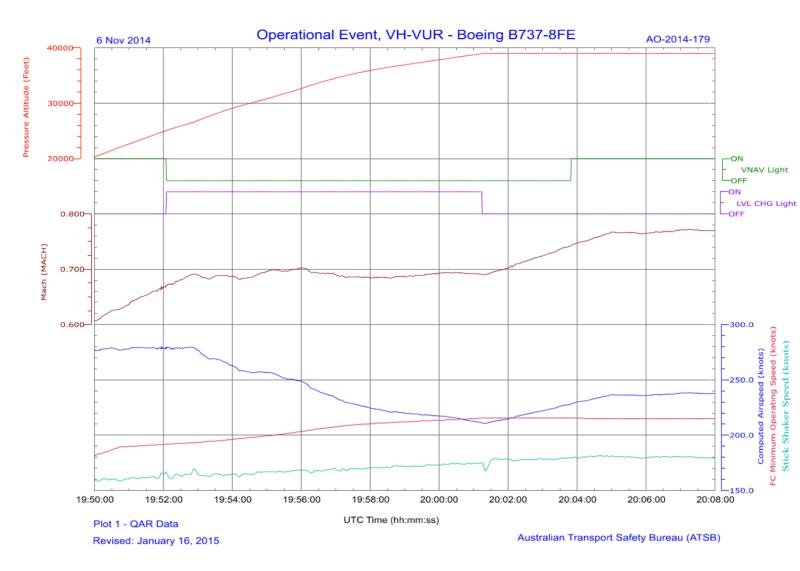B737 Speed Decay, Automation and Distraction
The Australian Transport Safety Bureau (ATSB) have reported on a serious incident involving Virgin Australia Boeing 737-800, VH-VUR on 7 November 2014.
The aircraft was climbing out of Adelaide and the crew used Vertical Navigation (VNAV) autopilot mode, selecting level change (LVL CHG) mode at FL250. The aircraft continued to climb at 280 KIAS and as designed the autopilot changed from maintaining a fixed indicated airspeed to a fixed Mach Number at FL265. That Mach Number was M0.69 (280 KIAS at FL265). The aircraft continued to climb to FL390 when the captain noticed that the indicated airspeed had decayed to the minimum manoeuvring speed (216 KIAS). 
The crew initiated an acceleration to M0.77. The aircraft continued for a safe landing at Brisbane without further incident.

B737-800 VH-VUR (Credit Robert Frola)
ATSB report that:
The captain recalled that LVL CHG mode may have been selected to manage continued climb through a layer of turbulence. The crew intended to re-select VNAV mode when LVL CHG mode was no longer required, but inadvertently overlooked that selection.
They also say:
During the operator’s investigation into the incident, the crew commented that a number of distractions may have contributed to the incident. The crew commented that sun glare was particularly problematic – the glare was directly through the windscreen for the duration of the climb. The crew also commented that they may also have been distracted by air traffic control and cabin-related communication requirements, and other air traffic in their vicinity. Additionally, both pilots consumed breakfast during the climb (at separate times), which may have provided a source of distraction.
The ATSB issued a report, Dangerous Distractions, in 2005 which concluded:
…the findings have shown that distractions have the potential to significantly threaten flight safety across all sections of the industry and during all phases of flight. Clearly, strategies to minimise pilot distraction need to be developed and designed with particular attention to the operations being undertaken.
On this incident the ATSB comment:
During the operator’s investigation into the incident, the crew commented that a number of distractions may have contributed to the incident. The crew commented that sun glare was particularly problematic – the glare was directly through the windscreen for the duration of the climb. The crew also commented that they may also have been distracted by air traffic control and cabin-related communication requirements, and other air traffic in their vicinity. Additionally, both pilots consumed breakfast during the climb (at separate times), which may have provided a source of distraction.”
In 2010, the European Aviation Safety Agency (EASA) issued a Safety Information Bulletin on the subject of Flight Deck Automation Policy – Mode Awareness and Energy State Management.
UPDATE 17 April 2016: C-130J Control Restriction Accident, Jalalabad
UPDATE 18 September 2016: AAIB: Human Factors and the Identification of Flight Control Malfunctions
UPDATE 8 July 2018: Distracted B1900C Wheels Up Landing in the Bahamas
UPDATE 13 January 2019: Human Factors of the Selection of Parking Brake Instead of Speed Brake During a Hectic Approach (ERJ145 at Runway Excursion at Bristol)
UPDATE 10 July 2019: Fatal B206L3 Cell Phone Discount Distracted CFIT
UPDATE 16 January 2021: UK CAA have issued this infographic on distraction:


Recent Comments